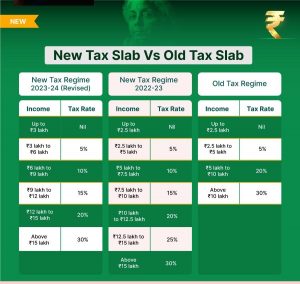How Can You Save More on Income Tax? A Beginner’s Guide – Part I
Paying income tax is necessary as these funds can be used for the growth and development of the country. However, it is no one’s favorite task. After all, who wants to part with their hard-earned money even if it is for a good reason?
The factor that determines the amount of tax individuals need to pay is their income. The more the amount earned, the more is the tax to be paid. But there is cause for celebration here as individuals through certain avenues can actually save on income tax. The Income Tax Act of 1961 has numerous provisions that allow for a certain tax amount to be saved every year.
But before delving into this, it is essential to have a basic understanding of the Income Tax slab that is currently in place.
For FY 2020-21, individuals have the option to choose between two tax regimes. These are –
- If an individual chooses to pay tax at lower rates as per the new tax regime, he/she must forgo certain permissible exemptions and deductions available under income tax
- Individuals choose to pay under the existing tax rates
The slab rates for the above will vary as well.
The current Income tax slab is illustrated in the table below –
For the sake of simplicity, in this blog, we will focus on saving Income Tax under the old regime. This is because tax deductions are available only under the old tax regime.
Steps to Save Income Tax in India
Did you know that there are many different sections under the Income Tax Act wherein tax can be saved? Each of these sections offer multiple investment options and come with a set exemption limit.
Section 80C
Under this section of the Income Tax Act 1961, individuals can claim benefits on contributions, investments, or payments made towards financial schemes as dictated by the Income Tax Law. The maximum deduction allowed under this section is Rs. 1,50,000 in a financial year.
Examples of investments that can be made under this section include:
-
Equity Linked Savings Scheme (ELSS)
Perhaps one of the most popular investment schemes, ELSS is a type of mutual fund with a lock-in period of 3 years and is currently the only mutual fund category in the country that can be claimed for a tax deduction. Since these funds invest in the stock market, they carry a moderately high risk, but in the long run, the returns are definitely worth the same.
-
Term Insurance Premium

Life is uncertain and availing of a term insurance plan can ensure financial protection for the family in case of the policyholder’s untimely death. These plans are also relatively economical and come with tax benefits.
-
Public Provident Fund (PPF)
This is a long-term, low-risk investment plan that provides tax benefits. The rate of interest is currently 7.1% and is compounded annually. The lock-in period is 15 years and the minimum investment is Rs.500 per year.
-
National Savings Certificate (NSC)
Another fixed-income investment option with a current interest rate of 6.81%, NSC is offered by the Government of India and requires a minimum deposit of Rs. 100. The lock-in period is 5 years
-
National Pension System (NPS)

Another option to save taxes is to invest in NPS which is a retirement benefit plan that is administered by the Pension Regulatory Fund Authority of India. The amount will be invested primarily in debt and equity instruments. For more information regarding this, please check Section 80CCD below.
-
Senior Citizen Savings Scheme
This government-backed tax saving option is available to those above the age of 60 and is a risk-free tax-saving option. The amount deposited will mature after 5 years and the current rate of interest offered is 7.4%.
-
Tax-Saver Fixed Deposit
With a maturity term of 5 years, this fixed deposit offers interest rates between 5.30% – 7.25% and requires a one-time lump sum deposit. However, individuals must note that while the investment amount is tax-free, the interest earned may be subject to TDS.
-
Sukanya Samriddhi Yojana (SSY)

A long-term investment plan specifically tailored to benefit the girl child, this government-backed savings scheme comes with an attractive interest rate of 7.6%. This account can be opened by the parents of a girl who is below the age of 10.
-
Tuition Fees
Individuals can claim deductions on the tuition fees paid for their children. This benefit is however applicable only for parents or guardians with a maximum of two children per person.
-
Home Loan Repayment
For taxpayers who have taken a home loan, the amount of EMI that goes into paying the principal amount is eligible for deductions.
Section 80 CCD
A subsection of 80C, Section 80CCD allows deductions on contributions made towards the National Pension System (NPS) or the Atal Pension Yojana (APY), as determined by the central government. Additionally, contributions that have been made by employers towards NPS will also come under this section. Section 80CCD is further divided into two subsections.
-
Section 80CCD (1)
Investments made by individuals towards NPS are eligible for a tax deduction. This section is applicable to Indian citizens (including NRIs) between the ages of 18 and 60. The maximum deduction that is allowed is 10% of the salary or gross total income and 20% for self-employed individuals.
-
Section 80CCD (1B)
Under this provision, individuals can claim a further deduction of Rs.50, 000 which is over and above the Rs.1.5 lakh available under Section 80CCD (1).
-
Section 80CCD (2)
The provisions of this section come into effect only when employers are contributing to the NPS of an employee.
Conclusion
As you can see, Section 80C and its subsections offer a plethora of benefits. However, we are not done yet. Here’s Part II of our blog where we delve into the other available tax saving options.
